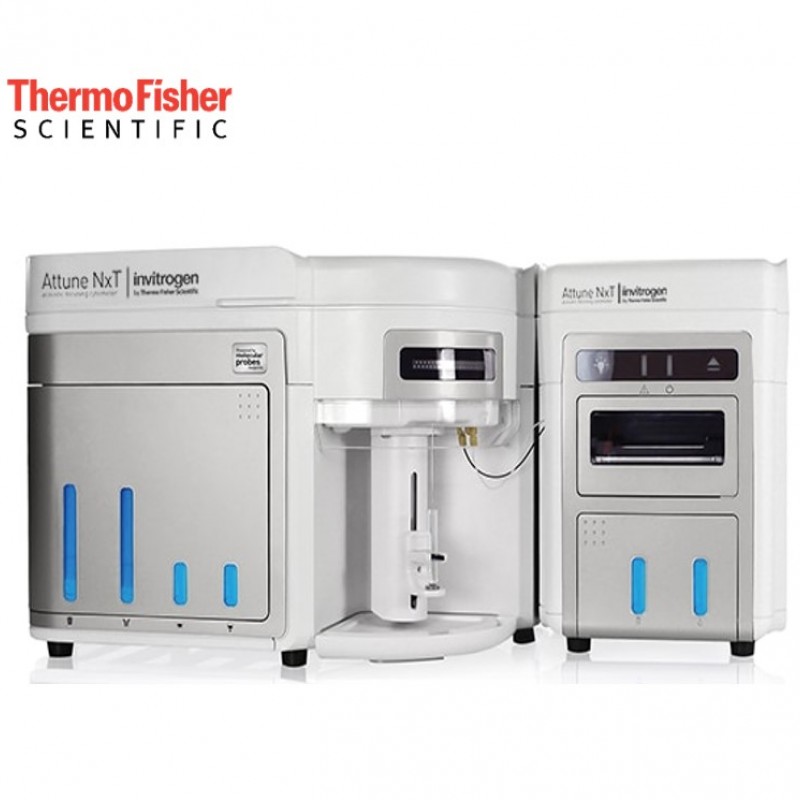
Almost any standard flow cytometry application can benefit from the high sensitivity and throughput of the Attune NxT Flow Cytometer. See our Sample Data page for examples spanning infectious disease research, fluorescent proteins, CRISPR gene editing, immuno-oncology research, microbiology, plant ploidy, platelets, stem cells, and T cells.
One classic flow cytometry application is immunophenotyping. Flow cytometry is the method of choice for identifying cells within complex heterogeneous populations, as it allows for multiparameter analysis of thousands to millions of cells in a short time. Strong signal separation in the Attune NxT Flow Cytometer shows excellent separation of cell populations into subsets for immunophenotyping. A wide range of reagent choices—as well as the system’s automated compensation module, four spatially separated lasers, and 14 color choices—help to simplify multicolor panel design.
